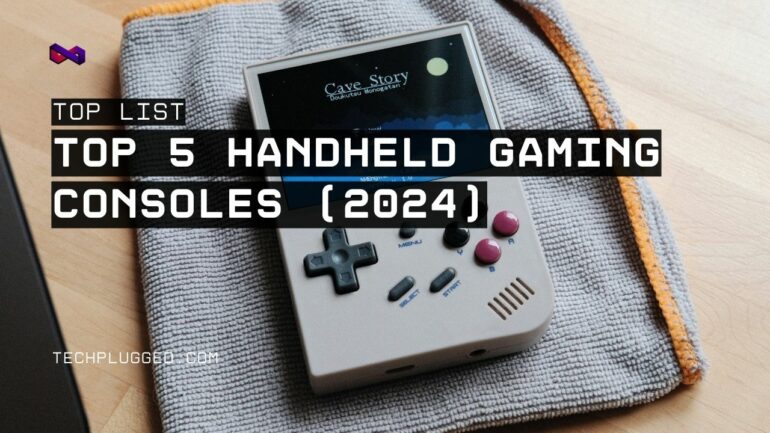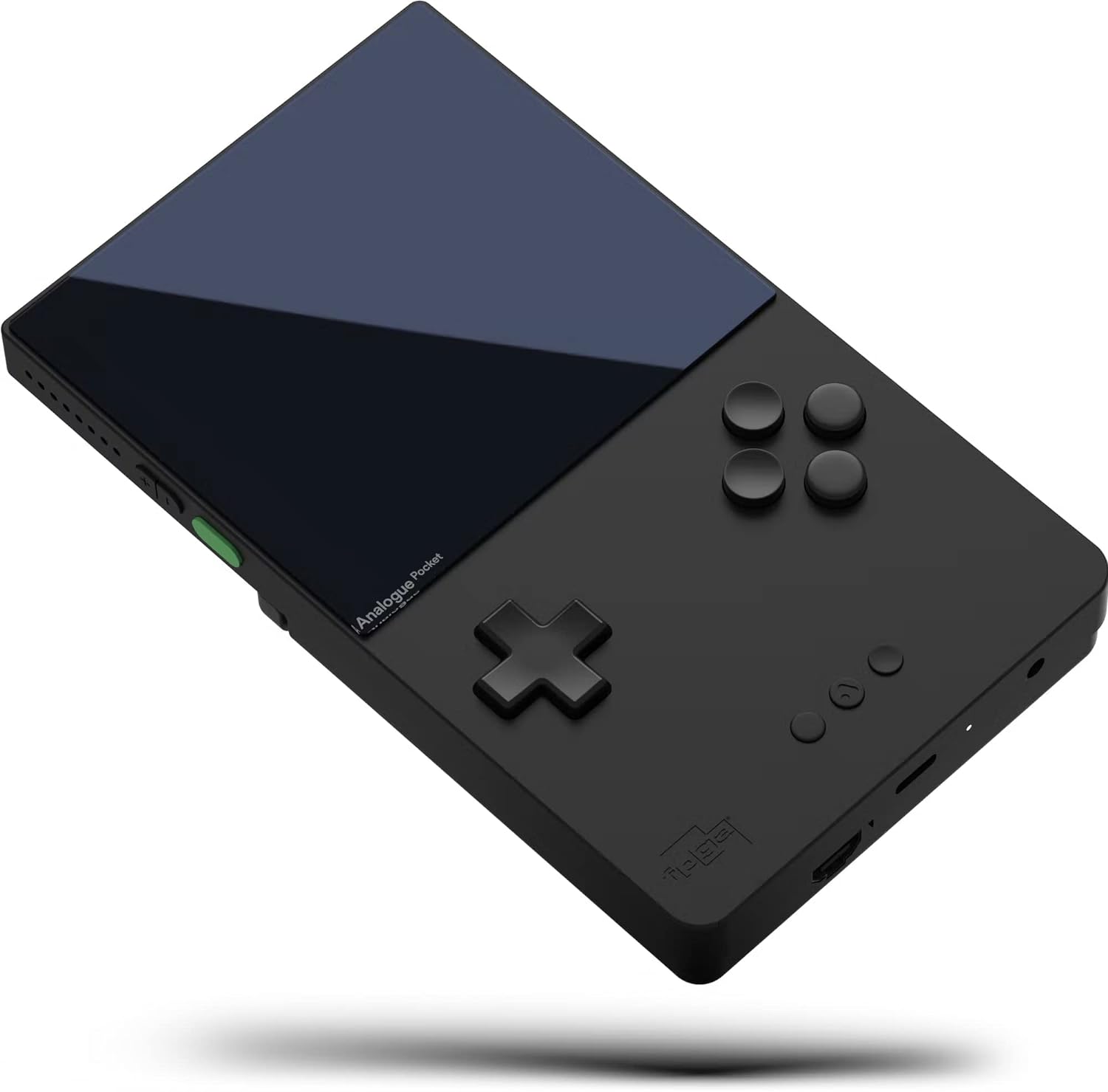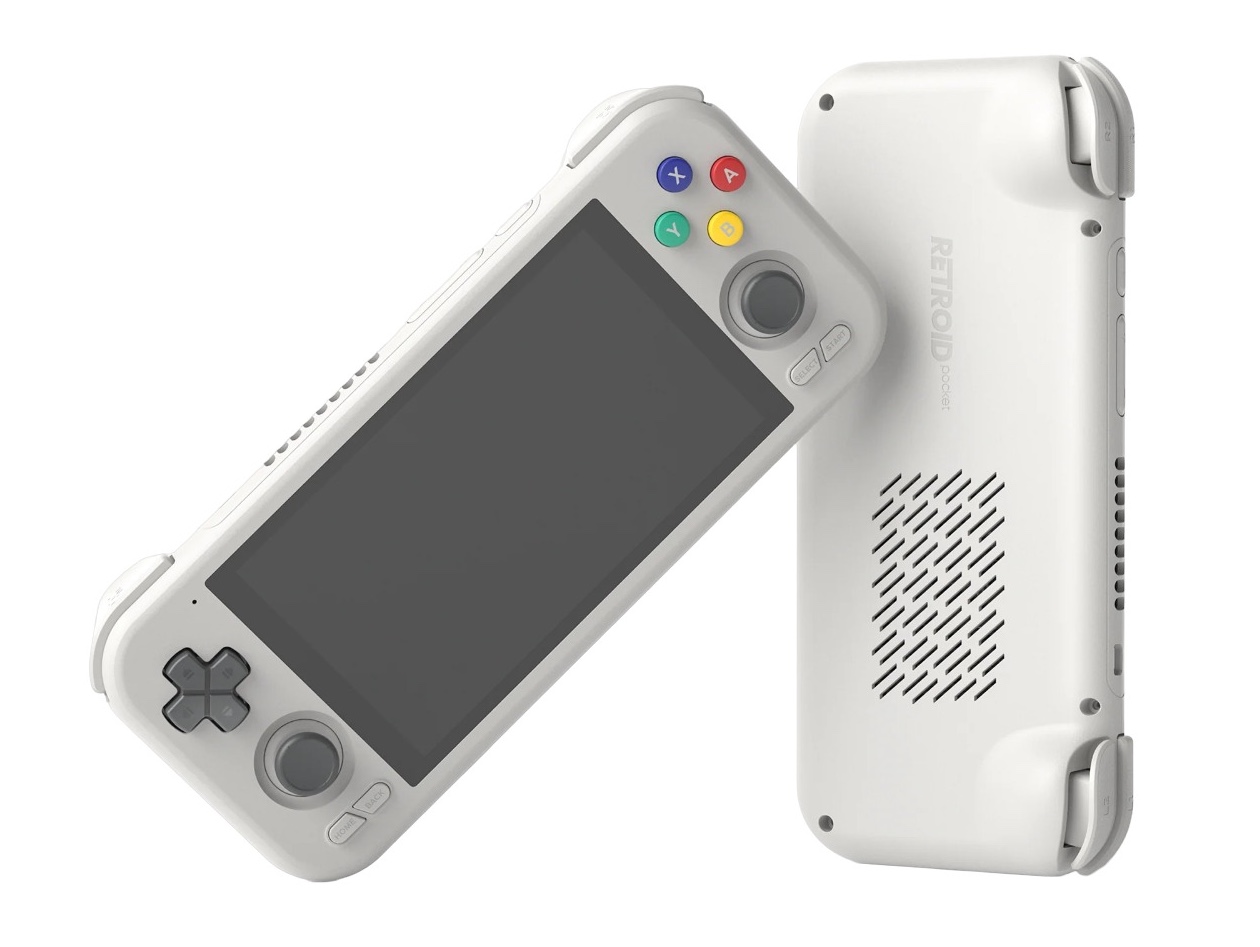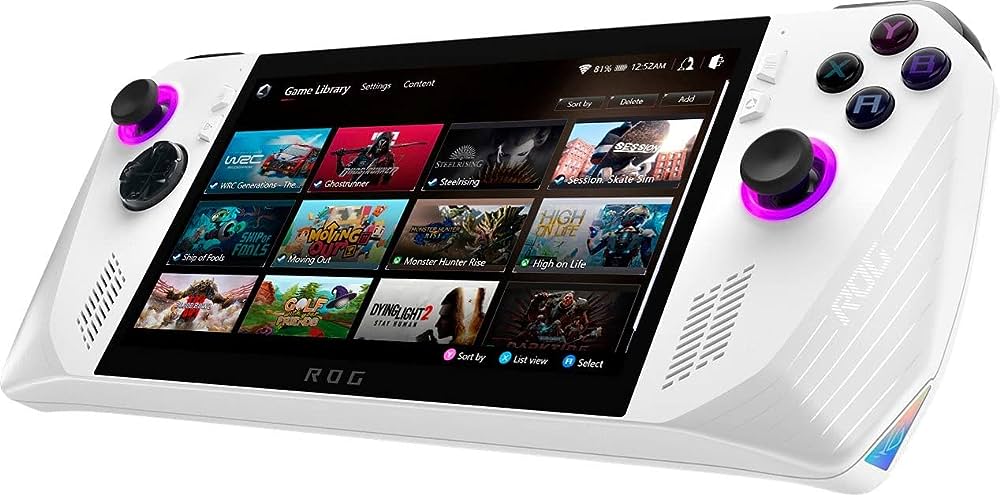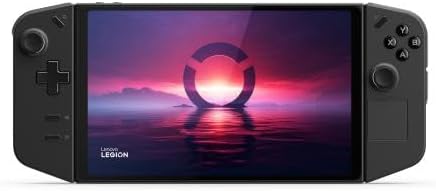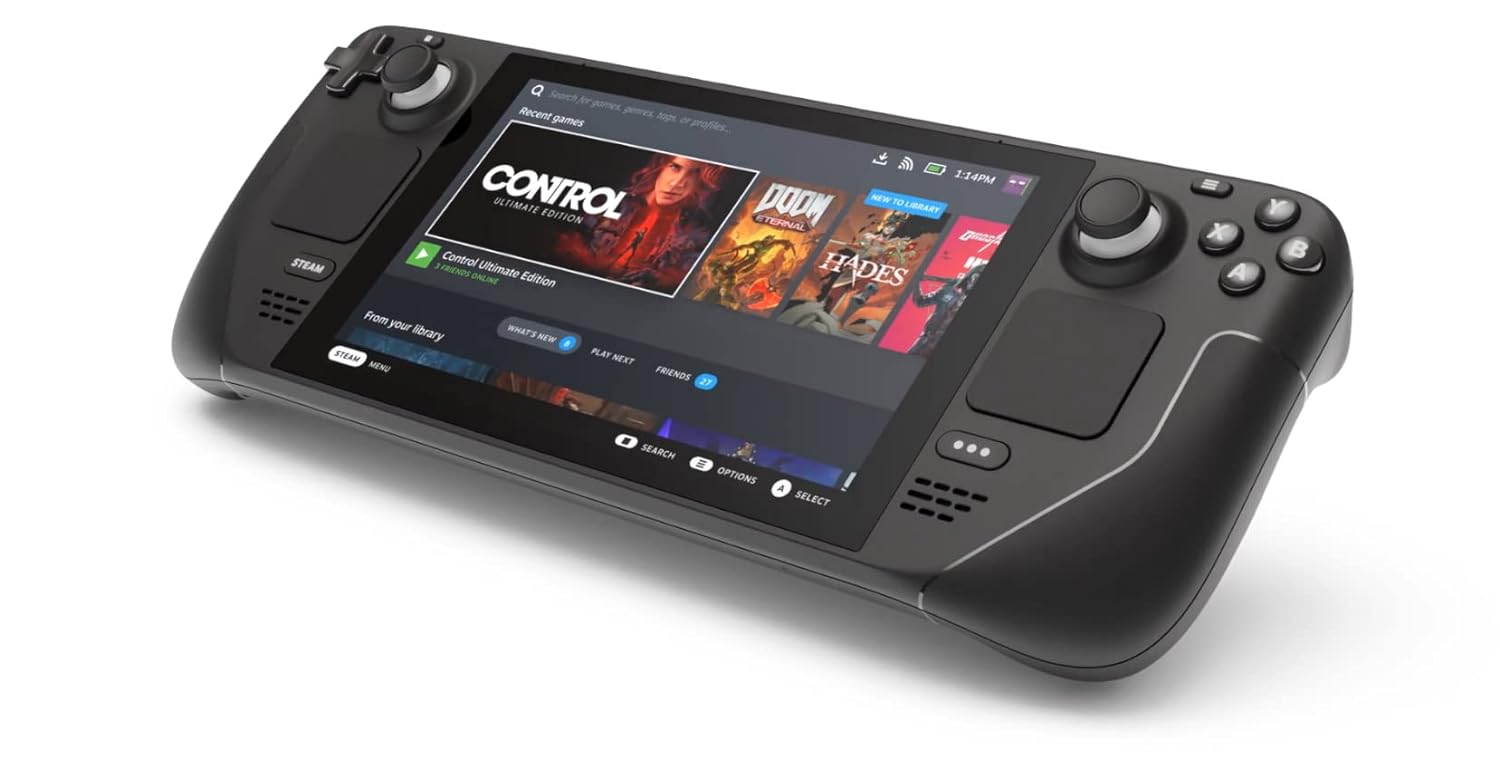Portable gaming is undergoing a renaissance thanks to the runaway success of the Nintendo Switch and rapid leaps in mobile technology. With new models flooding the market weekly, choosing the right handheld for your needs has become a dizzying challenge. But whether you prioritize affordability, emulation versatility, or premium pc-style power, today’s options let you game on the go better than ever.
Table of Contents
Top 5 Gaming Handhelds of 2024
Number 1. Analogue Pocket
Revered by retro game enthusiasts, the Analogue Pocket is essentially a premium modern-day Game Boy. Its trademark vertical form factor immaculately channels Nintendo’s iconic handheld, while advancing the experience dramatically from 1989.
Two extra face buttons join the classic A and B, along with rear triggers and a gorgeous backlit 3.5-inch LCD now packing 615ppi for supremely crisp visuals. The display dazzles with color profiles and filters mimicking classic Game Boy models too. Other modern niceties like USB-C charging, microSD storage and TV output broaden functionality as well.
At its core though, the Pocket replicates original hardware through FPGA circuitry rather than software emulation. This enables flawlessly responsive, pixel-perfect play for Game Boy, Game Boy Color, and Game Boy Advance cartridges. Just insert your physical copy like the old days. Sega Game Gear titles also run smoothly via purchasable adapters.
The benefits extend to software too. Thanks to ROM compatibility added post-launch, the Pocket can now emulate systems as advanced as the SNES. And its passionate community keeps unlocking new possibilities.
Priced at $220, the Pocket stretches budgets for a retro-minded device. And its shoulder buttons disappoint next to the otherwise stellar controls. But for players with bygone Nintendo handheld game collections or seeking the ultimate vintage portable experience, the uniquely graceful Analogue Pocket now delivers more than ever. Just expect high demand and shipment waits securing one.
Number 2. Retroid Pocket 4 Pro
The $199 Retroid Pocket 4 Pro punches above its weight for retro gaming enthusiasts on a budget. While lacking the power for native PC or modern console titles, its Android software and capable internals make it the best sub-$200 handheld we’ve tested for emulating classic platforms.
A smooth experience across PlayStation 1, Nintendo 64, and most earlier consoles comes courtesy of the MediaTek Dimensity 1100 chip and 8GB RAM. The built-in cooling fan and adjustable performance profiles even enable respectable PlayStation 2 and Nintendo GameCube play. Although not every demanding game runs at full speed, tweaking resolution and graphics settings enables success with a good portion of libraries.
Build quality belies the reasonable pricing too. The compact, comfortable slab design takes cues from the Nintendo Switch Lite, while quality buttons and analog sticks check important playability boxes. A responsive 4.7-inch IPS display keeps the retro action clear, if a bit cramped for modern titles through cloud streaming services. Battery life ranges from 3-4 hours for power-hungry platforms to nearly 9 hours with lighter 2D games.
For just $50 more, the Pro model’s boosted specs widen compatibility over the base $149 Retroid Pocket 4. But more casual retro gamers will likely still enjoy that cheaper model lacking the faster chip and extra RAM.
In the end, while pricier options provide more power, none can match the Retroid Pocket 4 Pro’s combination of architecture, build quality, and software versatility at this budget ceiling. For around $200, it’s a superb value to relive classic console gaming adventures on the go.
Number 3. Asus ROG Ally
For players seeking more graphical horsepower than the Steam Deck, the $700 ASUS ROG Ally brings full-fat Windows 11 gaming to an ultra-portable form. But extra performance comes with ergonomic and software tradeoffs.
At its core lies an AMD Ryzen 7 6800U processor offering up to 30W power draw when plugged in. This grants around a 20% frames-per-second boost in demanding games like Cyberpunk 2077 compared to the Steam Deck. The ROG Ally also features a smoother 120Hz 7-inch display, albeit slightly dimmer than Valve’s handheld and sans an OLED’s inky contrast.
Despite similar screen sizes though, the Windows 11-based Ally bests its SteamOS rival in portability with a lighter, thinner chassis. No official case is included however, and the Steam Deck boasts superior ergonomic handgrips for lengthy gaming sessions. Still, if you want the highest frame rates possible for AAA gaming in a reasonably compact form, the ROG Ally outshines the Steam Deck.
Thanks to full Windows support, you also enjoy complete cross-compatibility with game stores old and new – no need for software workarounds. For Xbox Game Pass subscribers or fans of Epic exclusives, the flexibility is a boon.
But this same OS versatility also introduces rough edges absent on the Steam Deck. Windows 11 lacks steamlined integration for a handheld experience out of the box. Expect odd UI scaling, graphics setting tweaks crashing games unexpectedly. Even basic operation occasionally requires swapping between gamepad and touch controls compared to Valve’s unified approach.
ASUS bundles the Armoury Crate app to wrangle settings and games like a console dashboard. But it still feels tacked on, with the company even providing a lengthy setup tutorial clip acknowledging the platform’s intrinsic challenges. When something goes wrong, troubleshooting often proves trickier on Windows than SteamOS as well.
We also can’t ignore growing reports of SD card compatibility issues among Ally owners – with cards being sporadically ejected mid-game or outright dying after use. For storage expansion then, we suggest replacing the device’s 512GB onboard SSD instead.
If you desire Windows gaming versatility in a petite yet potent portable, the ASUS ROG Ally mostly delivers. But ensure you are comfortable working around Windows limitations for a superior software library and frame rates. For players craving top-tier performance untethered from a desk, the ROG Ally brings satisfying power tied to an imperfect handheld platform.
Number 4. Lenovo Legion Go
Fans of the ASUS ROG Ally seeking an even bigger Windows handheld screen should check out the Lenovo Legion Go. Matching key specs like the Ryzen 7 6800U chip, 144Hz refresh rate, and $700 asking price, the Legion Go’s marquee upgrade is an expansive 8.8-inch display reaching laptop-rivaling 2560 x 1600 resolution.
Extra tweaks enhance versatility too, including detachable controllers, a kickstand for tabletop play, and rear touchpads aiding navigation. Battery life sees a slight bump as well over the ROG Ally.
But as with all Windows handhelds, software integration issues persist – perhaps even more so on the Legion Go. Lenovo’s enhancements don’t feel as complete as ASUS’ Armoury Crate suite yet. And the imposing size/weight further strain portability compared to competitors.
Still, for players adamant on Windows gaming in a handheld form, the Legion Go brings the biggest screen around to date. Its enlarged panel stretches AAA titles and media to near tablet dimensions. Just ensure your hands and pockets can accommodate the literal stretch requiring heftier hardware demands such immersion.
For those undaunted by the bulk, the vivid display could make the Legion Go’s evolution hiccups worthwhile. It ultimately provides another option advancing Windows gaming ambitions in the ultraportable space – warts and all.
Number 5. Steam Deck
A year into its life, Valve’s ambitious Steam Deck handheld PC continues offering the most compelling balance of price, performance and usability for portable players. And the new Steam Deck OLED model provides the definitive experience for those afforded its premium price.
The headline upgrade is exactly what it sounds like – a vibrant 7.4” OLED display touting superior contrast and color to the original Steam Deck’s LCD panel. Beyond richer visuals with inky blacks, the new screen also supports HDR for heightened brightness and runs smoother at up to 90Hz refresh rates. Thanks to additional battery capacity and a larger cooling fan keeping volume lower, longevity sees a nice bump as well over the already-impressive base model.
Of course, buttery smooth frame rates remain out of reach in the latest graphically intensive blockbusters on either Deck. But both deliver a reasonable 30-60fps on many AAA games that simply can’t run natively elsewhere in the portable console space currently, including Elden Ring and Cyberpunk 2077. The sheer variety of supported titles spanning decades thanks to SteamOS emulation capabilities is staggering too – much of it playable for hours on end untethered.
And Valve continues refining the user experience with frequent software boosts tailoring performance and removing rough edges navigating a vast cross-compatible library. It’s still wise to expect some occasional tweaking getting games running their best, but necessary tradeoffs are diminishing steadily.
Pricing still represents the biggest barrier to entry, but also remarkable value. While the OLED commands a $150 premium starting at $549, that nets you the ultimate portable big-screen gaming canvas today. And the base $399 model with more basic LCD panel still impresses deeply for the money. Compared even to budget gaming laptops with vastly inferior battery life, the Steam Deck line offers outstanding bang for buck.
No device is flawless, and ergonomic reservations persist given the Steam Deck’s beefy footprint next to traditional handhelds. But between its maturing software ecosystem and hardware refinements like the stellar OLED upgrade, Valve’s portable PC vision keeps realizing its immense potential. For an expanding library of treasures both modern and classic, it remains unrivaled sophistication coupled with usability. If you have the means and desire, the Steam Deck delivers incredible gaming versatility no competitors can currently match.
